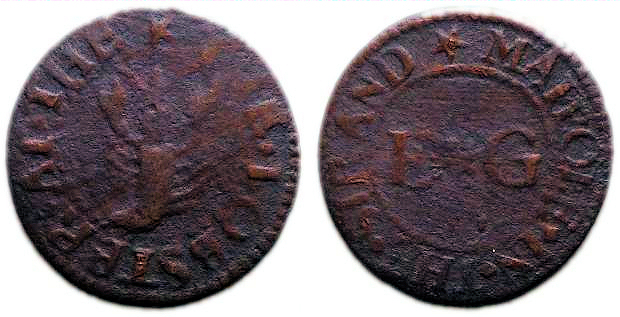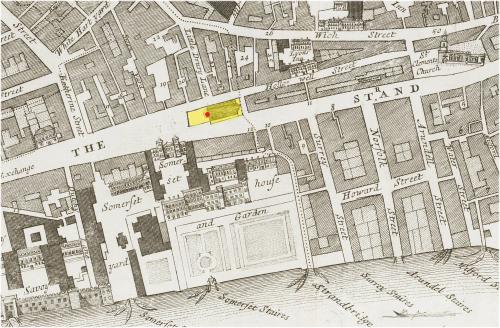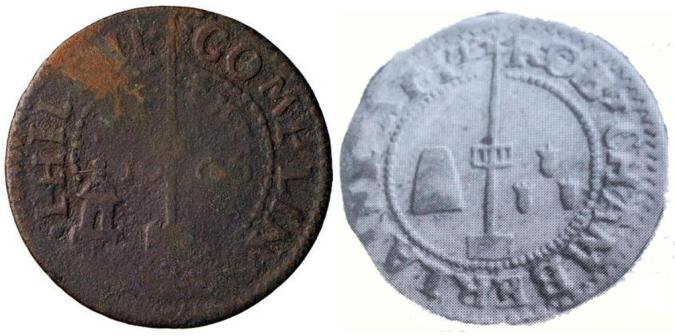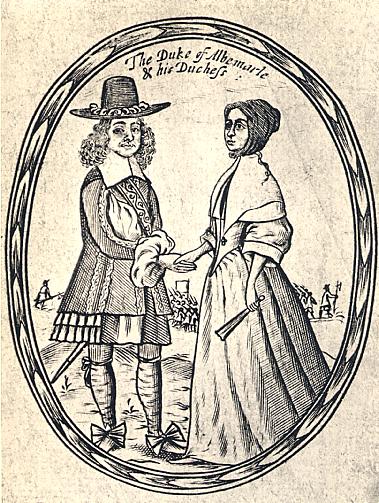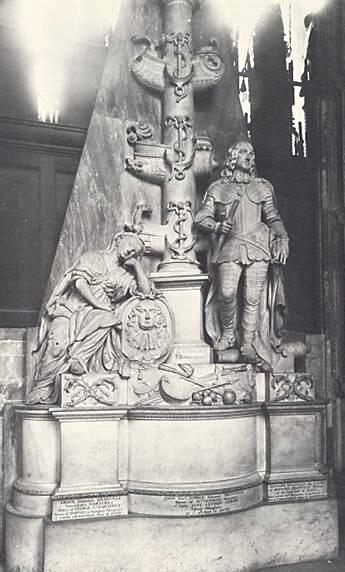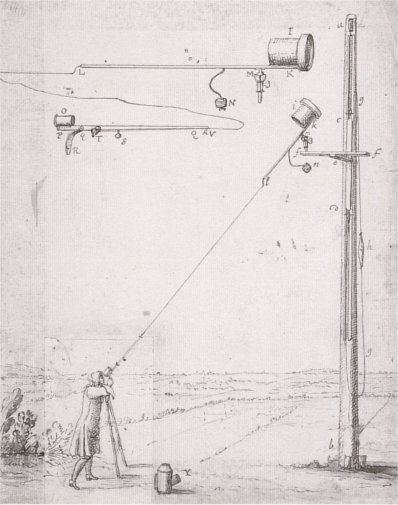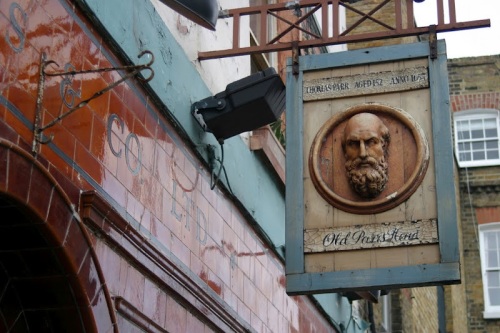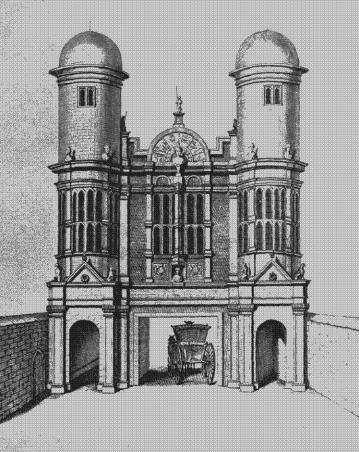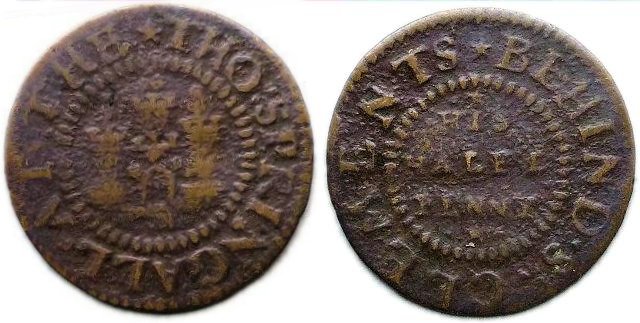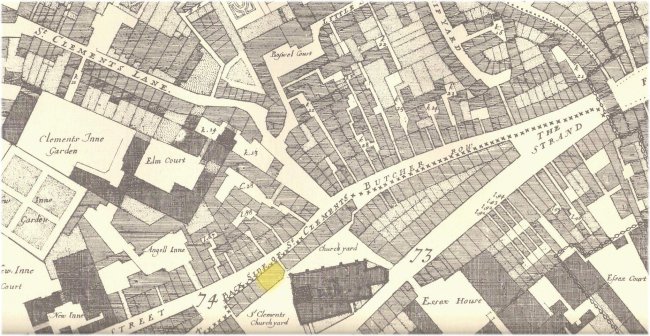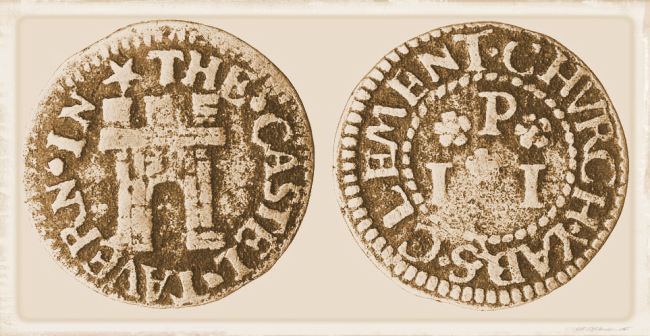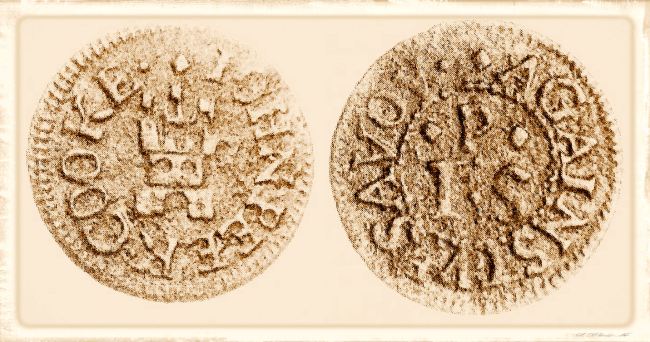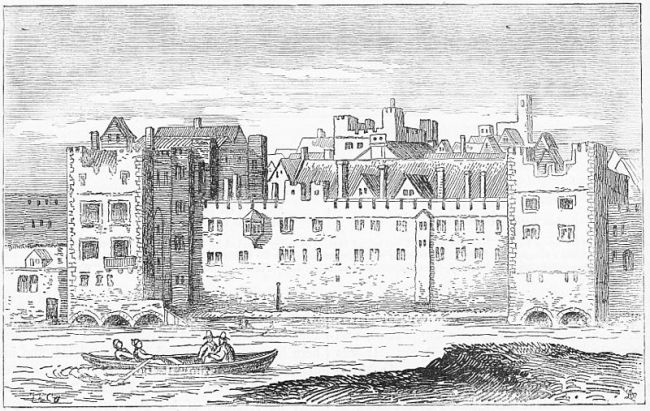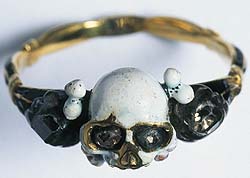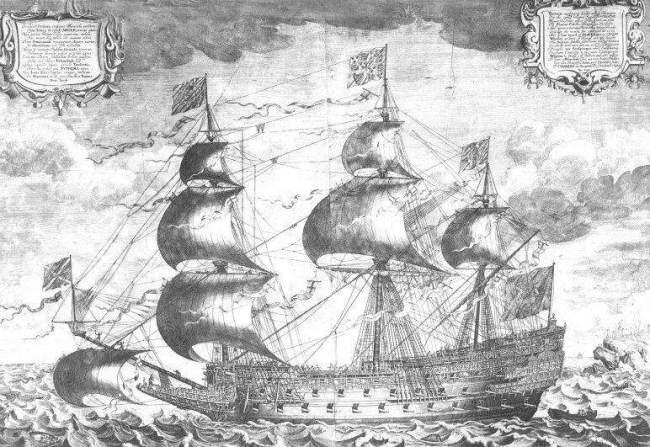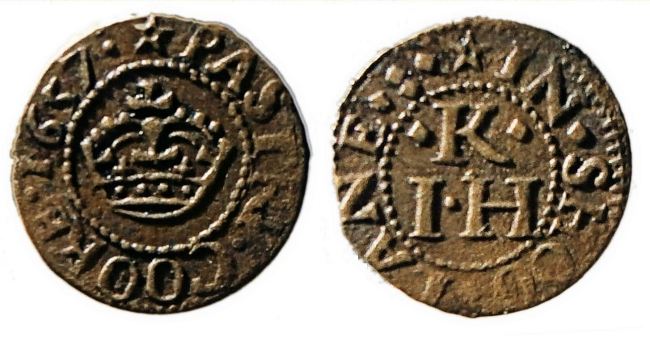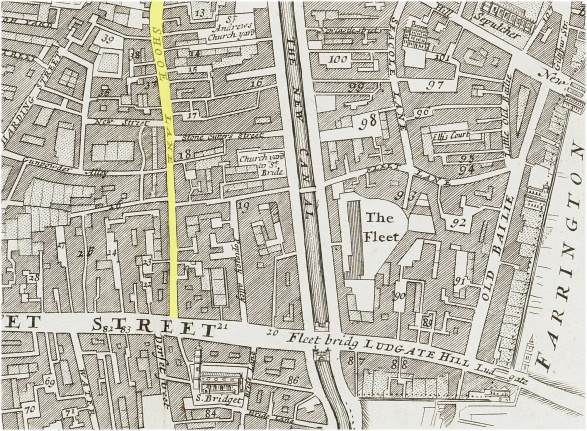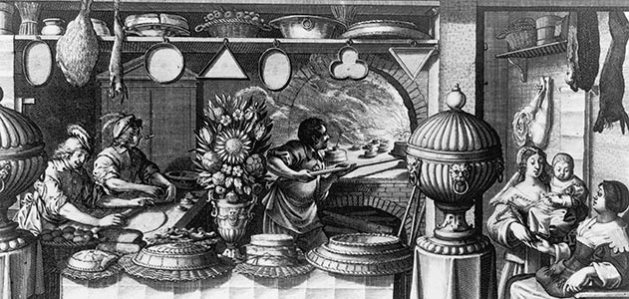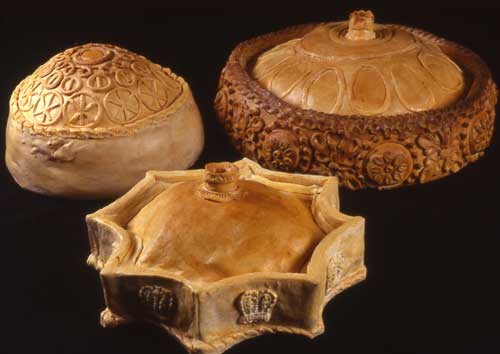The above copper half penny token measures 18.3 mm and weighs 1.70 grams. It was issued in 1666 by Humphrey Vaughan a tradesman of White Hart Yard off Covent Garden in Westminster. Its design may be formally described as follows;
Obverse: (sexfoil) HVMPHRY . VAVGHAN . IN . , around a beaded inner border, within the depiction of a man wearing a hat walking left carrying a sack over his shoulder.
Reverse: (sexfoil) WHITE . HART . YARD. 1666, around a beaded inner border. Within the legend HIS / HALF / PENY in three lines.
The portrayal of a man carrying a sack found on the obverse of this token is not unique as at least two other examples are known from the London area. These were issued by a coal and lime merchant respectively. This could act as a clue to Humphrey Vaughan’s trade.
There were several White Hart Yards in and around 17th century London including examples in Stepney, Holborn, Drury Lane, St. Martin’s Lane, Tothill Street, Bermondsey, and Southwark. Research into this token’s issuer (as outlined below) has confirmed that the White Hart Yard in question in this case was that which lead west off Drury Lane in the south-east part of the parish of St. Paul’s in Covent Garden. The street derived its name from its location immediately behind the White Hart Inn which fronted onto the Strand and is recorded as early as 1570(1).
White Hart Yard no longer exists in Westminster’s modern street plan. It ran to the south of, and in a parallel alignment to that of, today’s Tavistock Street along the stretch leading into Drury Lane. Its course is now lost under the Waldorf Hilton Hotel.
In Search of Humphrey Vaughan
Humphrey Vaughan’s half penny token offers very little information about its issuer. While it clearly states the address of his premises in 1666 as White Hart Yard it is unclear as to which of the various locations of this name, in and around 17th century London, is being referred to. Often the obverse pictorial design selected for such tradesman’s tokens offers an indication as to the issuer’s trade. In this case we are left unclear although, as has previously pointed out, this particular design is known from at least two other similar London tokens whose issuers were coal and lime merchants respectively. Fortunately sufficient references to Humphrey Vaughan remain in the historical record to allow us to further address these questions and many others relating to his family’s history.
The following partial life history of Humphrey Vaughan has been constructed from contemporary parish registers, rate book entries, various tax return registers and probate records. While there is always the chance of confusing the historical records relating to different individuals who share the same name, the use of specific time line, family relationship and geographical identifiers can often be used to help eliminate or minimise the risk. Where available such criteria have been applied in this case (Note 1 and 2).
The first clear record of Humphrey Vaughan, the token issuer, appears in 1646 in the parish registers of St. Botolph’s Aldersgate in the city of London.
3rd December 1646 – Marriage of Humphrey Vaughan and Rachell Clarke
Humphrey’s age or home parish are not recorded but on the assumption that this was his first marriage we might estimate his then age as being early 21 to 25. This gives us an estimated period for his birth as 1621 to 1625. Assuming the couple followed tradition their marriage was likely held in the bride’s home parish.
Just over 9 months later the couple’s names again appear, this time in the parish registers for St. Martin-in-the-fields, Westminster, within a record of the christening of their daughter Jane;
5th September 1647 – Christening of Jana, the daughter of Humphridi Vaughan and Rachellae
Humphrey’s association with this parish thereafter continues for the rest of his recorded life.
The same set of parish resisters go on to record the birth and death of further children to Humphrey and Rachel over the next 9 years;
16th October 1648 – Christening of Elizabeth, the daughter of Humphridi Vaughan and Rachellae
21st September 1651 – Christening of Rachel Vaughan, daughter of Humphridi Vaughan and Rachelis
3rd April 1654 – Christening of Humphrey, son of Humphrey Vaughan and Rachell (born on 2nd April 1654)
31st July 1656 – Burial of Humphrey, son of Humphrey Vaughan and Rachell
In the same year as the death of his son (i.e. 1656) Humphrey Vaughan is recorded as living in Russell Street, Covent Garden in the parish of St. Martin in the Fields. A series of entries in the Westminster rate returns books record him, and we can presume the rest of his family, in this street until at least 1663(2). Interestingly this is further backed up by the numismatic evidence from the following tradesman’s token.

A farthing tradesman’s token issued by Humphrey Vaughan at or by the sign of the Goat in Russell Street, Westminster
The design of this brass farthing may be described as follows;
Obverse: (cinquefoil) HVMPHRY . VAVGHAN , around the depiction of a goat walking left.
Reverse: (cinquefoil) IN . RVSSELL . STREET , around a twisted wire inner circle, within a triad of initials comprising H | (mullet) V (mullet) | R , with a (mullet) blow.
The style and denomination of the token arguably suggests an issue date of the mid-1650s to early 1660s. The triad of issuers’ initials on the reverse of the token are those of Humphrey and Rachel Vaughan. The token clearly confirms Humphrey Vaughan’s business address as being at or by the sign of the goat in Russell Street. However, it falls short in confirming his occupation.
In a time before the formal address numbering of buildings the use of ornate and memorable trade signs, in association with specific street names, were the standard means of expressing a location’s address. Trade signs were typically suspended from support rods at an elevated position on the street facing outer wall of their owner’s business premises. After the great fire of 1666 many of the new brick built buildings and business premises in London incorporated trade signs in the form of carved stone reliefs which were built at height into the outer wall of the buildings’ fabric.
An analysis of Humphrey’s trade sign (i.e. the goat) offers few clues as to his trade. The first record of this sign in London is recorded in Cheapside in 1260(3). No particular set of tradesmen appear to have adopted the sign as being representative of their occupation although the image of a goat or a goat’s head does appear in the crest or as a supporter in the coats of arms of several of the city’s Livery Companies including the Haberdashers, Curriers and the Cordwainers. This particular example of the use of the sign might have a more locational and historical significance. Russell Street, variously built between c.1610 and c.1632, was named after Francis Russell, the 4th Earl of Bedford, who was largely responsible for developing his family’s earlier grants of land in and around Covent Garden(4). The image of a goat had been adopted by the Russell family as an armorial badge. As such the goat may well have been adopted by some of the tenant tradesmen in the area in honour of their landlord’s family.
As stated above it is possible that Humphrey Vaughan’s business premises were by and not necessarily at the sign of the goat. If this were the case then the trade sign depicted on his token may not have been his own. Between 1633 and 1634 a well-documented Covent Garden vintner by the name of William Clifton, was the proprietor of the Goat tavern at the north-west corner of Russell with Bow Street. If this were the sign referred to in Humphrey’s token it would arguably put his premises very close by, if not adjacent to, the tavern. As an alternative conclusion of the evidence presented is that at the time he issued his farthing trade token Humphrey Vaughan was the proprietor of the Goat tavern in Russell Street. However, subsequent reviews of the master and apprentice records of the Worshipful Company of Vintners for the early to mid-17th century has failed to identify any mention of a Humphrey Vaughan(5) .

A map of the Covent Garden area (c.1720) showing White Hart Yard and Russell Street plus the location of the Goat Tavern (in red)
While unaffected by the Great Fire of London of 1666 the Covent Garden area was hit hard by the Great Plague of the previous year. It is not known how the Vaughan family fared during this tumultuous period in the city’s history but by Lady Day of 1666 it appears that they had moved out of Russell Street into alternative premises close by. This is apparent from the Hearth Tax returns for this year which record Humphrey as paying tax on a property with three hearths in White Hart Yard (6).
A further series of entries in the Westminster rate returns books, plus a listing in a tax return list for 1693 (Note 3) record Humphrey Vaughan, and presumably his remaining family, in White Hart Yard from 1672 to 1705(7)(8). The 1693 tax listing referred to above records Humphrey’s property in White Hart Yard as having a rental value of £25 and the value of his stock as £50.
At some time prior to 1686 it would appear that Rachael Vaughan died as indicated by the following entry from the parish registers of Holy Trinity, Minories.
24th June 1686 – Humphrey Vaughan, widower of St. Martin Fields, and Elizabeth Bowman, spinster of St. James, Westminster, married by Mr. Anderson.
No further records of Humphrey Vaughan have been found after 1705 and it can only be assumed that he died sometime shortly after this date. A copy of Humphrey’s Will, dated 22 July 1698, exists in the London Metropolitan Archives(9). This throws considerably more light on his occupation and later life.
At the time Humphrey made his Will in 1698 he describes himself as being in good physical and mental health. He confirms his home parish as being St. Martin-in-the-Fields and states his occupation as a “coals seller”, i.e. the seller of lump wood charcoal and sea-coal. In the 16th to 18th century London all mineral coal would have been referred to as “sea-coal” as it was almost exclusively brought into the capital by sea via fleets of collier vessels. Cargo from the latter would have been brought into wharves and stockyards distributed along the north bank of the River Thames via barge. Such small boats were used to transfer coal from the collier vessels which were moored downstream of Old London Bridge. At this time most coal supplied into London was shipped out of the north-east coalfield via the River Tyne.

A late 17th century or early 18th century trade card belonging to Philip Fruchard, Coal Merchant at the Golden Heart in All Hallows Lane off Thames Street. The image depicts porters transferring bags of sea-coal off a barge into an awaiting cart
It is not clear if by the term “coals seller” Humphrey Vaughan was a small-scale fuel seller or if he was a fully established woodmonger trading in larger quantities of domestic fuels from his own wharf and or stockyard. Unfortunately most of the records of the Worshipful Company of London Woodmongers (which would have included sea-coal traders) have not survived and so we are unable to search them for any mention of Humphrey Vaughan.

The central obverse detail of Humphrey Vaughan’s half penny token compared with that of a coal seller from a mid-17th century copy of “The Cries of London”. The latter could possibly have been the die sinkers source for the former token design.
The size of Humphrey Vaughan’s estate, as outlined in his Will, is unclear but appears very modest as do his monetary bequests. The will mentions no surviving children only three grandchildren the bequests to which were as follows;
- Thomas Caton – £20 to be paid to him on his 21st birthday and that Humphrey’s wife Elizabeth should provide and help in his upbringing until such time as he can be bound into a suitable trade apprenticeship which Elizabeth was to assist in finding for him.
- Humphrey Hodge – 40 shillings.
- Elizabeth Hodge – 20 shillings in addition to what Humphrey had already given to her prior to making his Will.
The remains of Humphrey’s estate and goods were to be left to his wife Elizabeth and then for the bequest of a final sum of 40 shillings to his friend, fellow parishioner and supervisor of his Will, Thomas Roades. This bequest was intended for the purchase of a mourning ring by which Thomas could remember him by.
Notes:
1) During the research for this article several other references to a Humphrey Vaughan were made in various other London parish registers. As they do not appear to be related to Humphrey Vaughan the token issuer of St. Martin-in-the-Fields they have been omitted from the above partial life history. However, for completeness they are recorded below;
(a) 4th May 1664 – Burial of Humphrey Vaughan, aged 1 year, at the parish church of St. Botolph-without-Bishopsgate.
(b) 22nd July 1674 – Baptism of Humphrey Vaughan son of Humphrey at the church of St. Katherine-by-the-Tower.
(c) 7th January 1694 – Birth and christening of Rebecca daughter of Humphrey and Anne Vaughan at the parish church of St. Martin-in-the-Fields.
As Humphrey Vaughan the token issuer is recorded as marrying Elizabeth Bowman in 1686 and an Elizabeth is recorded as Humphrey’s wife in his Will of 1698 it is difficult to see how he could have been married to a lady called Anne in 1694. It is also noted that there is no reference to either an Anne or a Rebecca in Humphrey’s Will.
2) The Four Shillings in the Pound Aid (Note 3) tax listings for Westminster list a second record for a Humphrey Vaughan in Sheer Lane Ward of the parish of St. Clement Danes(10). The tax assessment records his property’s rental value as £20 and the value of his stock as £0. It is assumed that this tax assessment is either for a different Humphrey Vaughan to that of our token issuer or alternatively for a second property belonging to the token issuer.
3) The Four Shillings in the Pound Aid – This Aid or Assessment was collected in London and Westminster in order to finance the wars fought by King William between 1689 and 1697. Two Acts of Parliament passed in 1692 and 1693 specified the collection of four shillings in every pound (a 20 per cent tax) on the rental value of all property, income earned in public service, and stock or ready money held as part of a personal estate. Individuals whose property was worth less than 20 shillings were exempt. The tax was administered by the City Chamberlain, and raised £296,160 8s 10 3/4d, in 1693 from the metropolis as a whole.
References:
1) Way, A. – Letter from ALBERT WAY, Esq. Director S.A., to Sir HENRY ELLIS, Secretary, accompanying an Indenture of Lease from the Earl of Bedford to Sir William Cecil, of a portion of pasture in Covent Garden. Read 25th January 1844. Archaeologia, Or, Miscellaneous Tracts Relating to Antiquity: Volume 30. (The Society of Antiquaries of London, 1844).
2) Westminster Rate Books 1634-1900 Transcription – Entries for Humphrey Vaughan for 1656, 1663, 1666, 1672 and 1705.
3) Lillywhite, B. – London Signs: A Reference Book of London Signs from Earliest Times to about the Mid Nineteenth Century. (London, 1972).
4) Bow Street and Russell Street Area: Russell Street. Survey of London: Volume 36, Covent Garden. (London, 1970).
5) Webb, C. – London Livery Company Apprenticeship Registers. Volume 43. Vintners’ Company 1609-1800. (2006).
6) Davies, M.; Ferguson, C.; Harding, V.; Parkinson, E. & Wareham, A. – London and Middlesex Hearth Tax. The British Record Society. Hearth Tax Series Volume IX, Part II. (London, 2014).
7) Ibid 2.
8) City of Westminster, St Martin in the Fields, Drury Lane Ward, White Hart Yard – Four Shillings in the Pound Aid 1693/4. Centre for Metropolitan History (London, 1992).
9) London Metropolitan Archives and Guildhall Library Manuscripts Section, Clerkenwell, London, England; Reference Number: AM/PW/1704/086.
10) City of Westminster, St Clement Danes, Sheere lane Ward, – Four Shillings in the Pound Aid 1693/4. Centre for Metropolitan History (London, 1992).




